In the lush landscapes of the Neotropics, a dazzling and elegant hummingbird known as the White-necked Jacobin (Florisuga mellivora) graces the tropical gardens and rainforests with its enchanting presence. With its distinctive appearance, graceful flight, and remarkable behavior, the White-necked Jacobin has captured the admiration of birdwatchers, naturalists, and enthusiasts of the avian world. In this article, we delve into the world of the White-necked Jacobin, exploring its characteristics, habitat, behaviors, and the magical aura it brings to its vibrant habitats.
White-necked Jacobin images
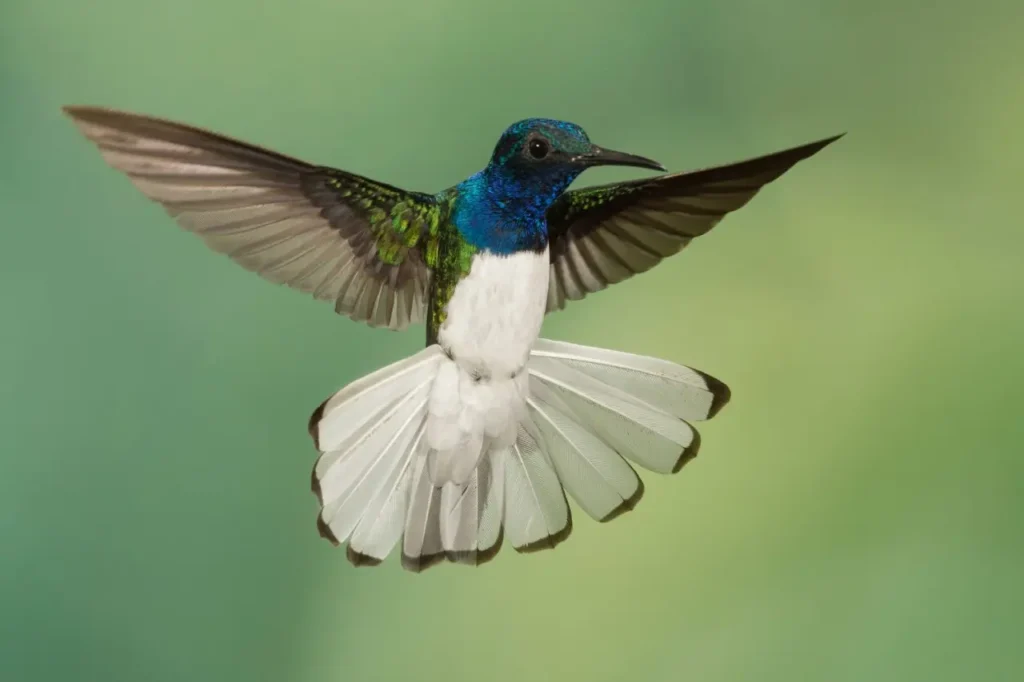
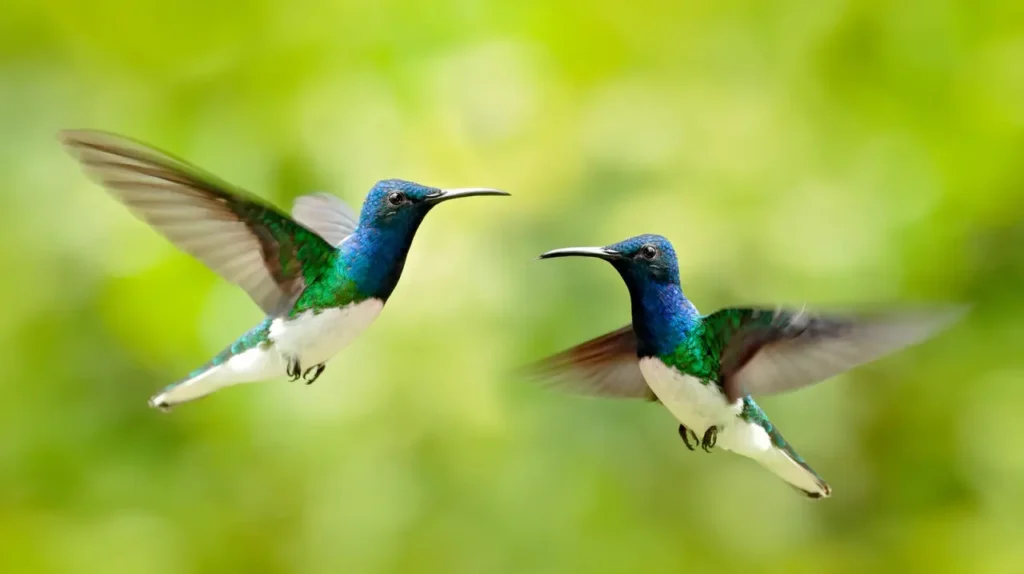
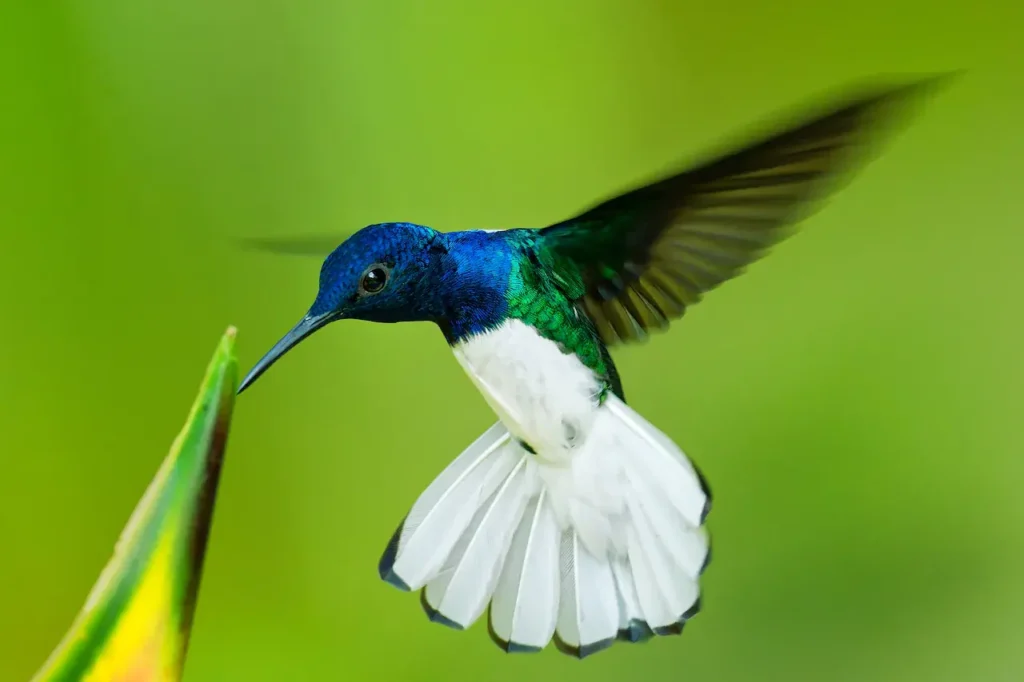
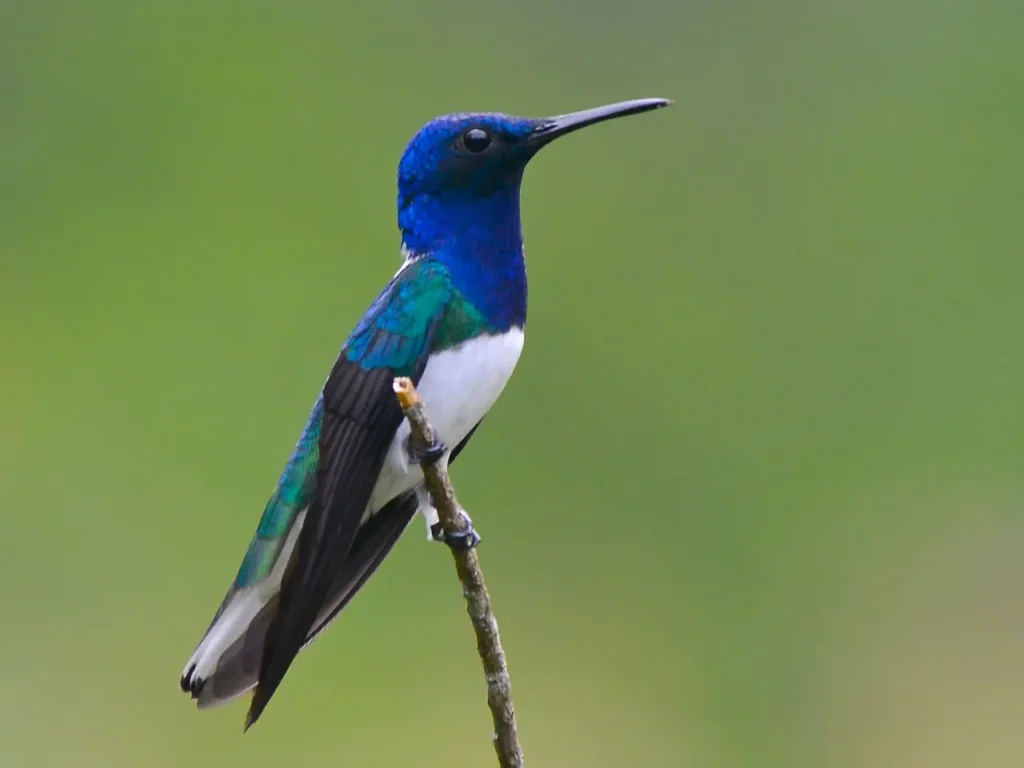
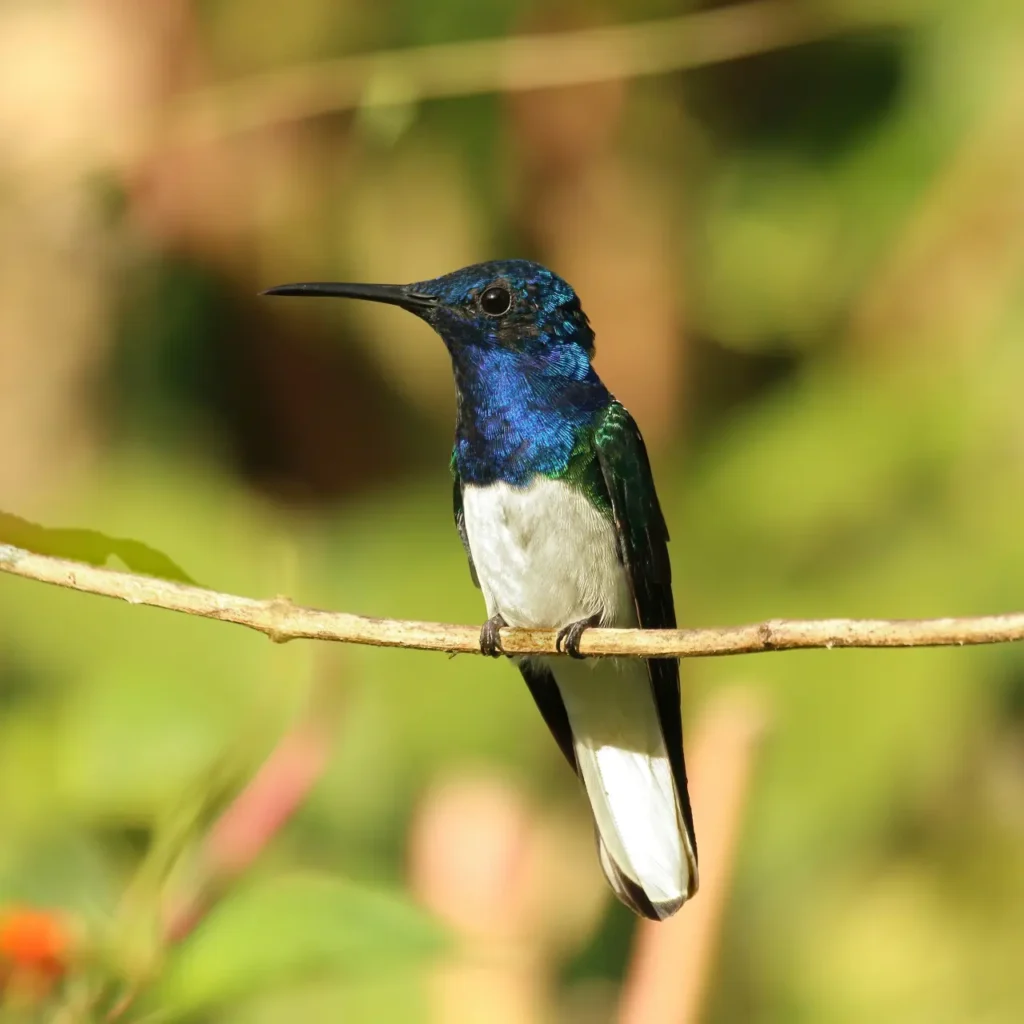
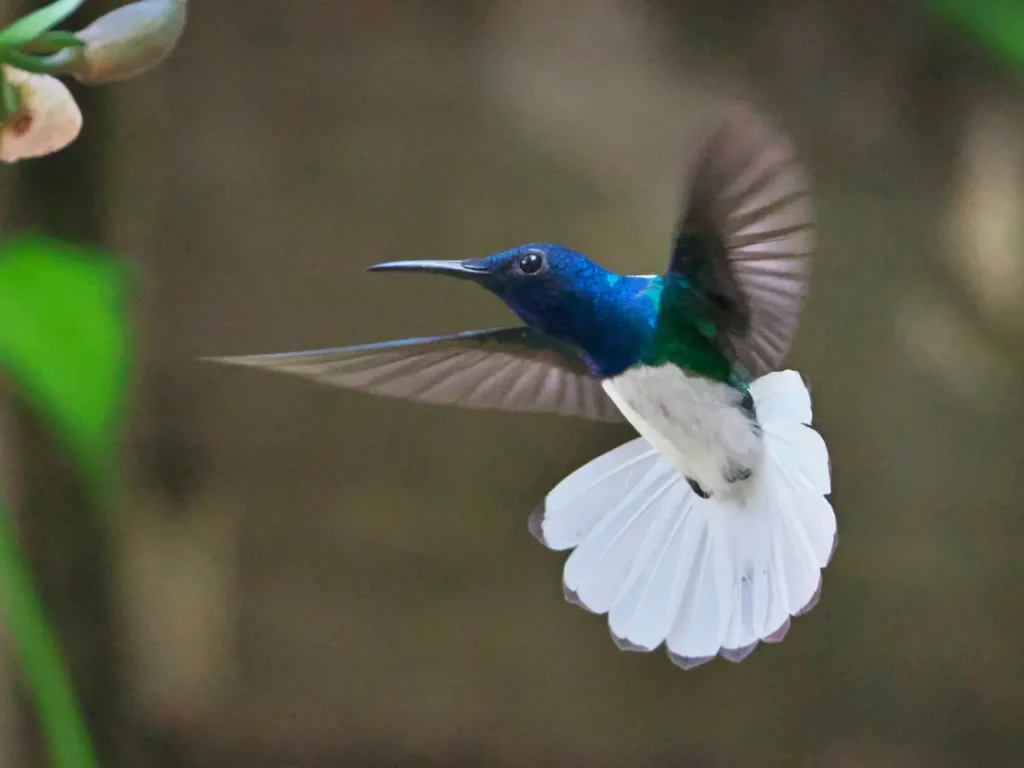
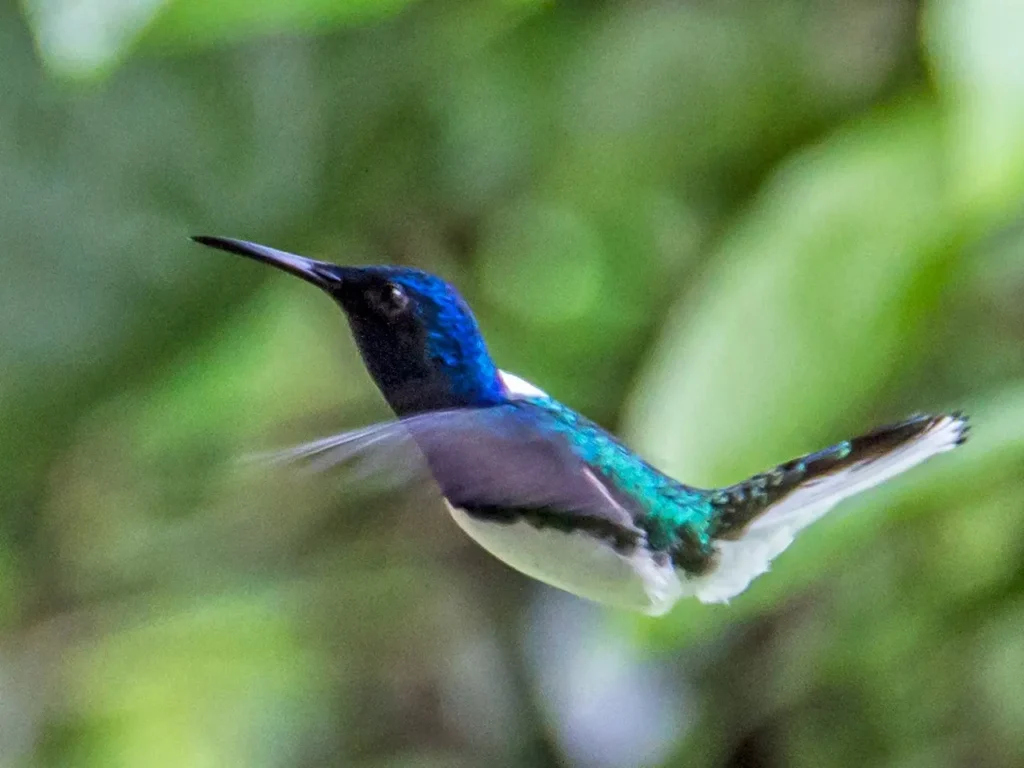
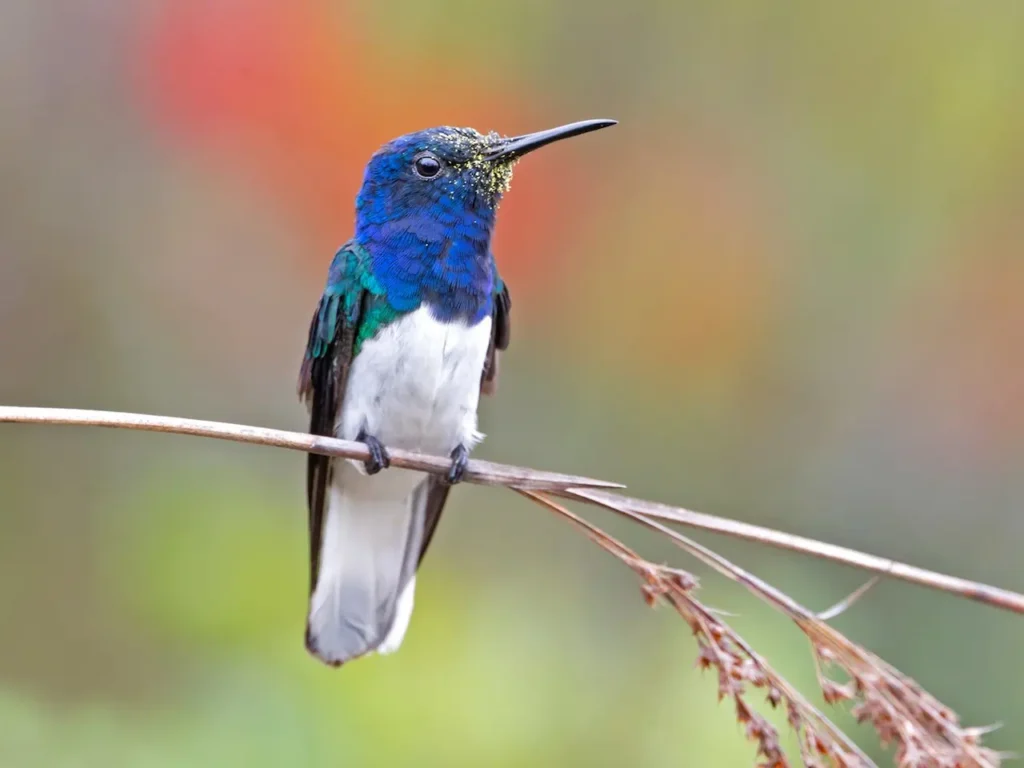
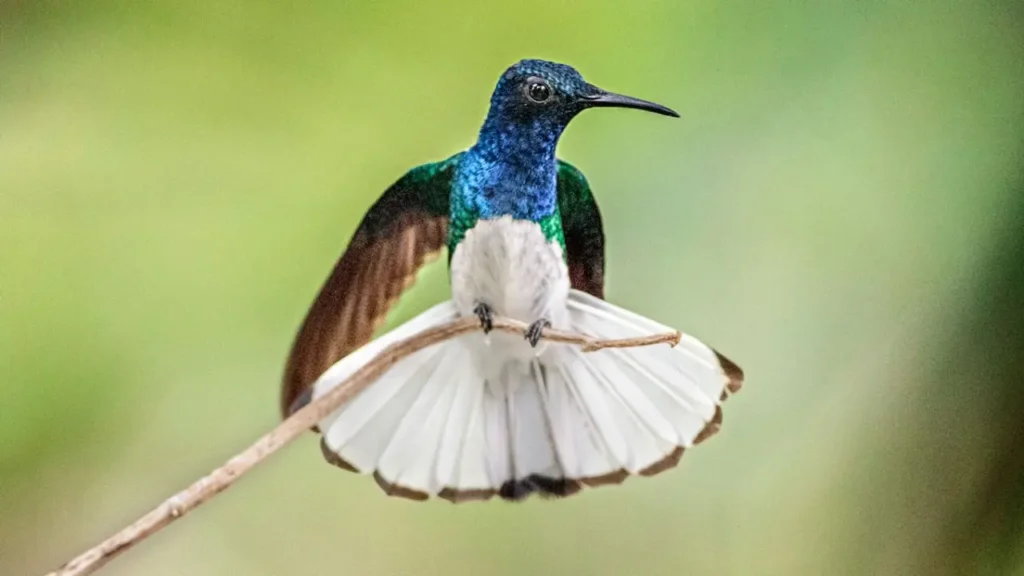
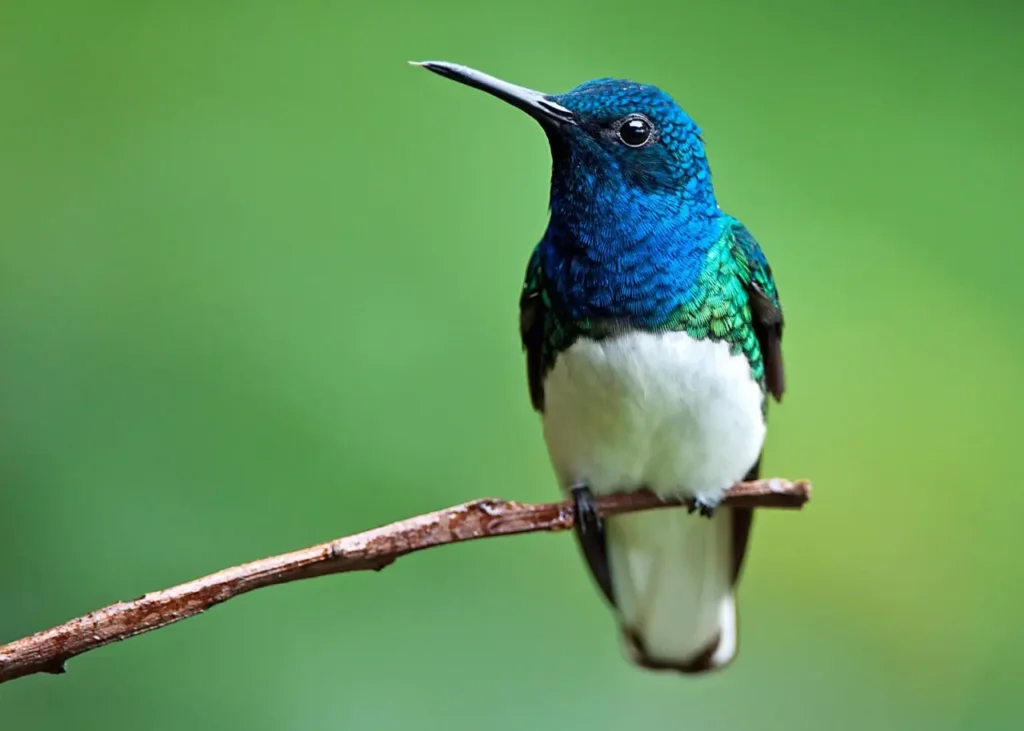
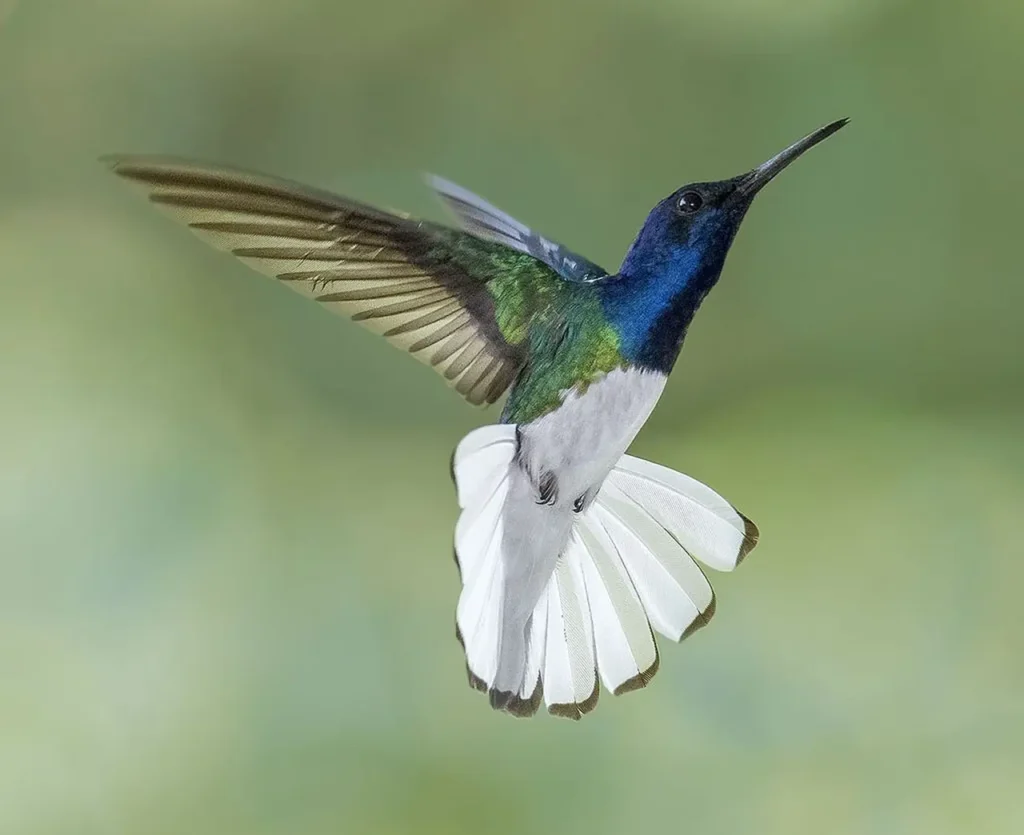
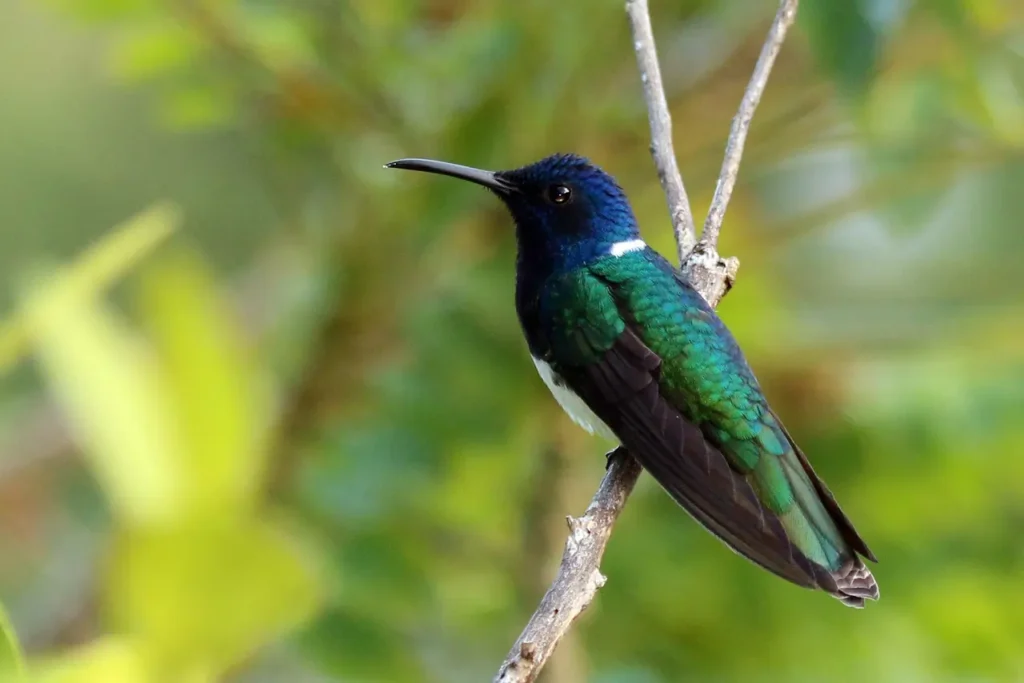
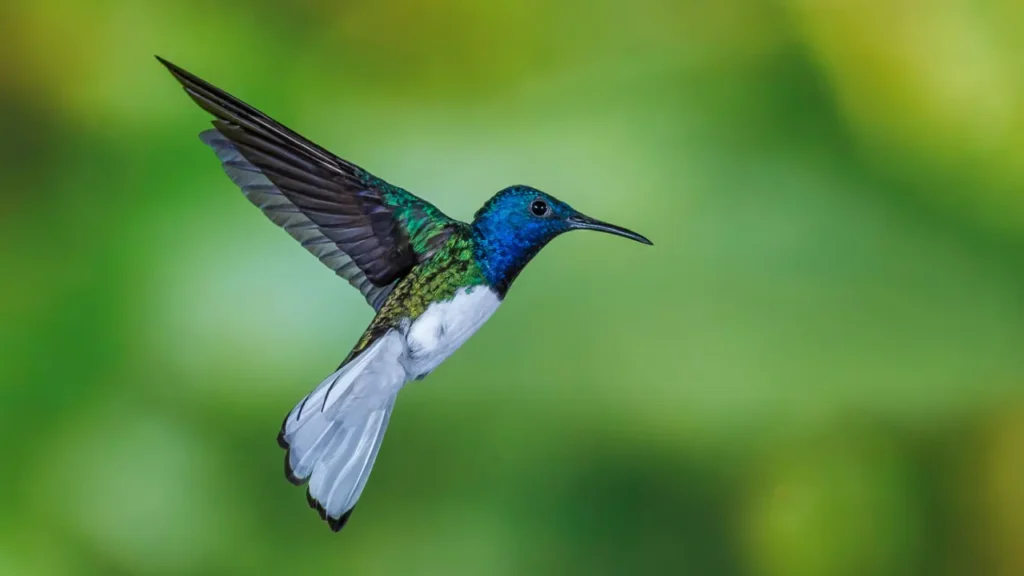
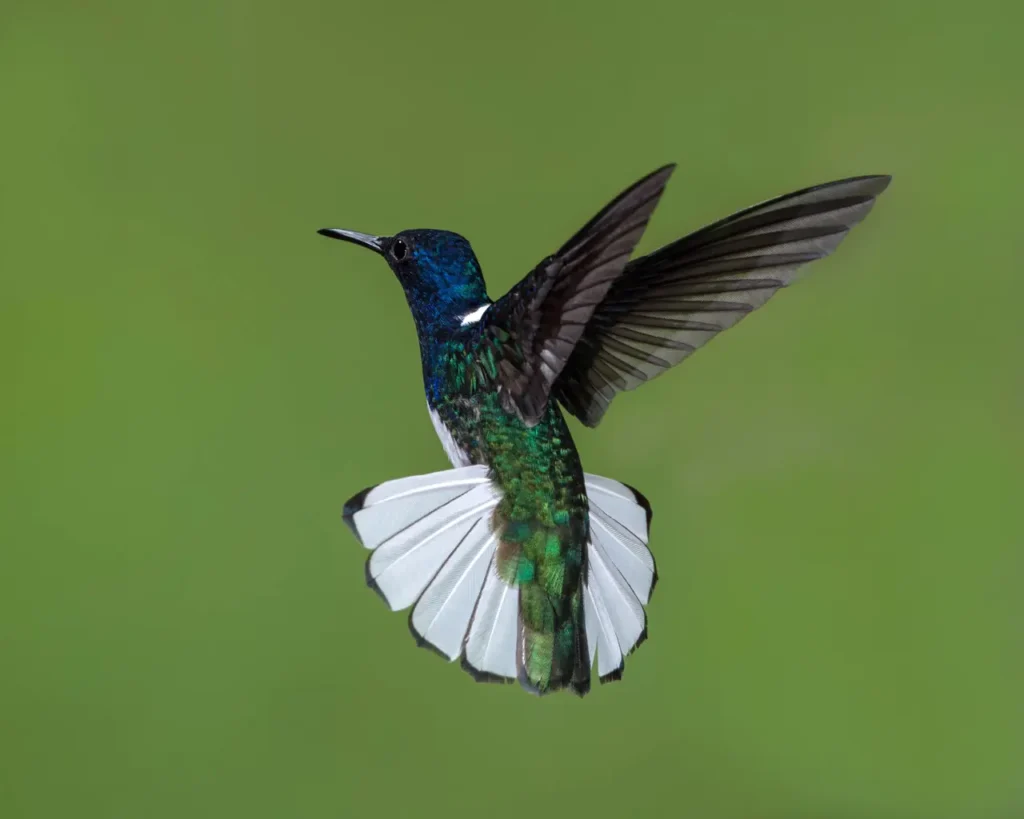
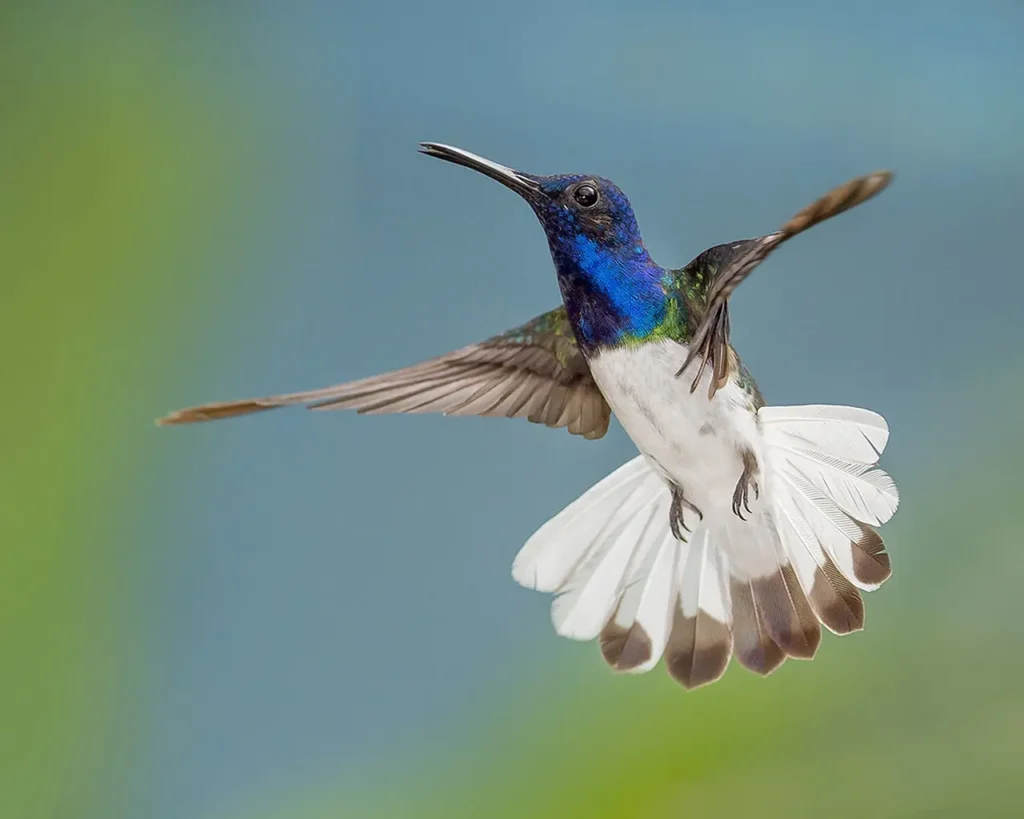
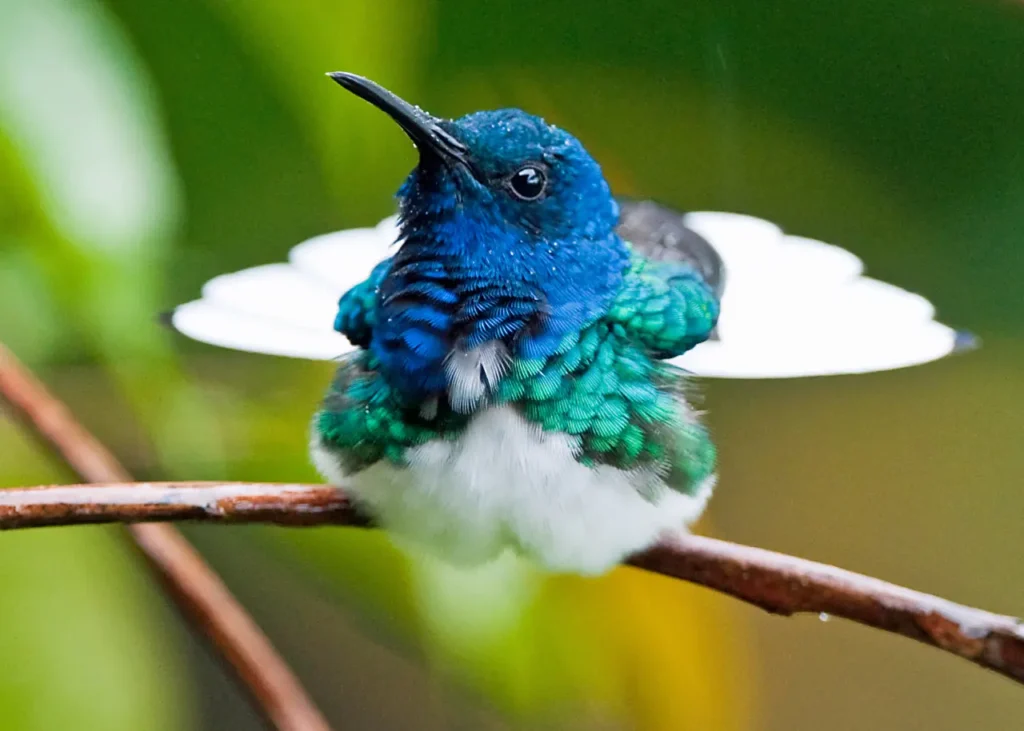
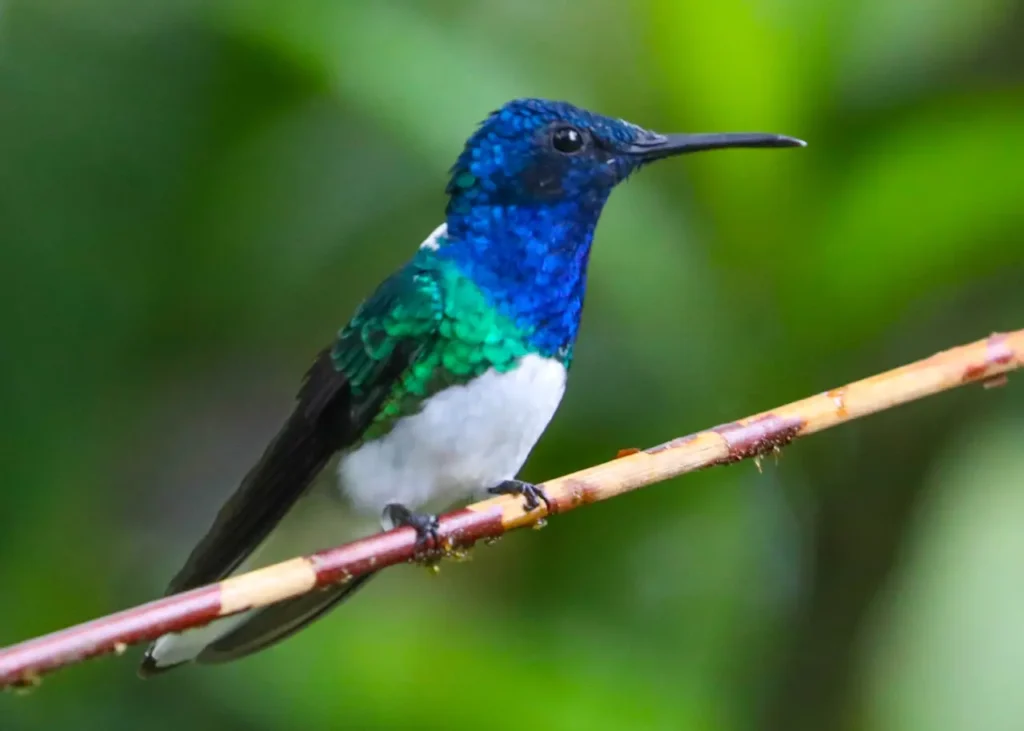
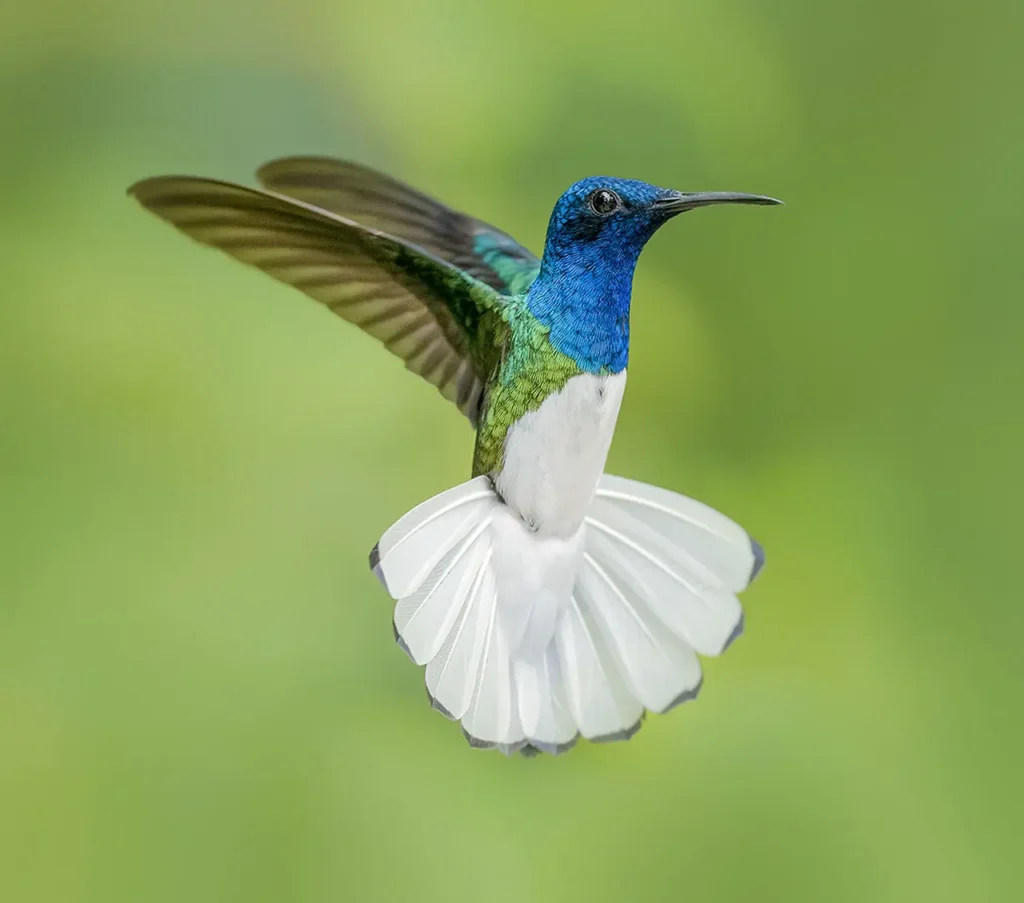
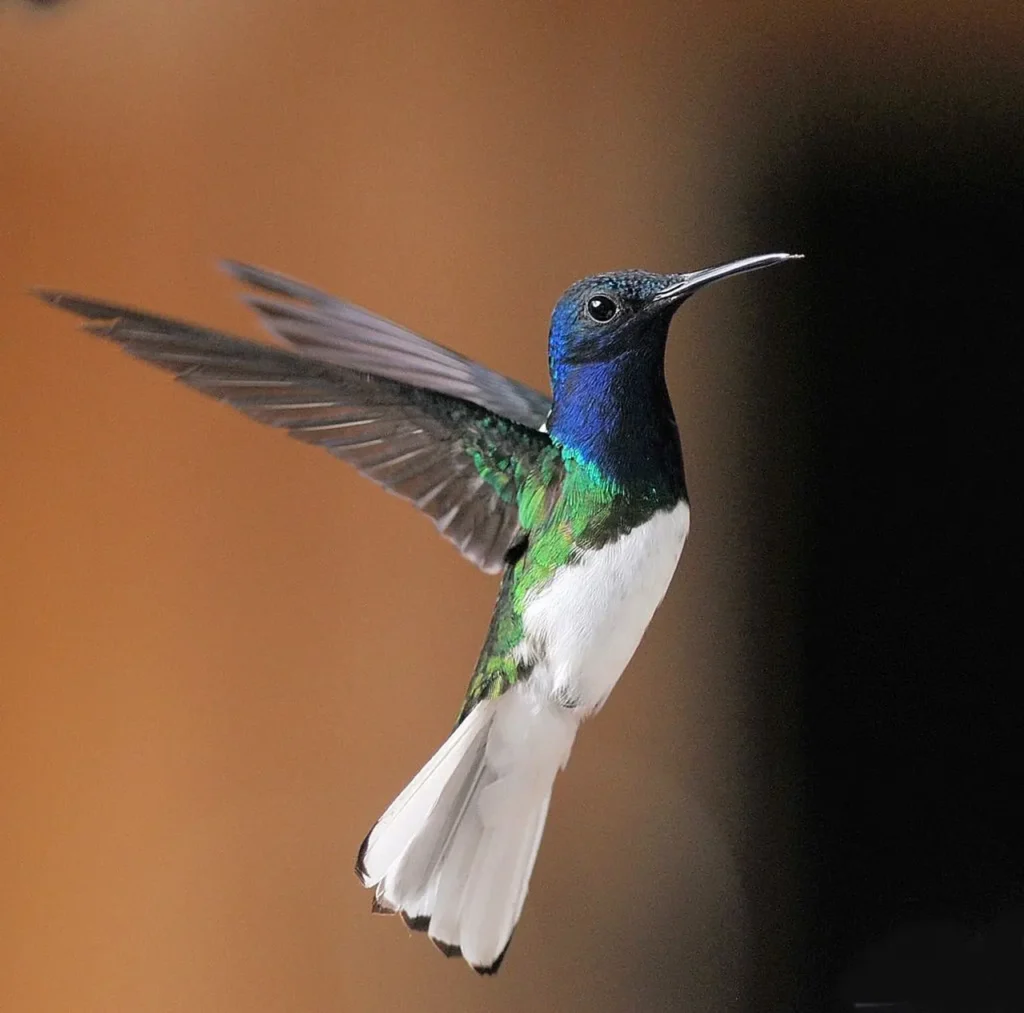
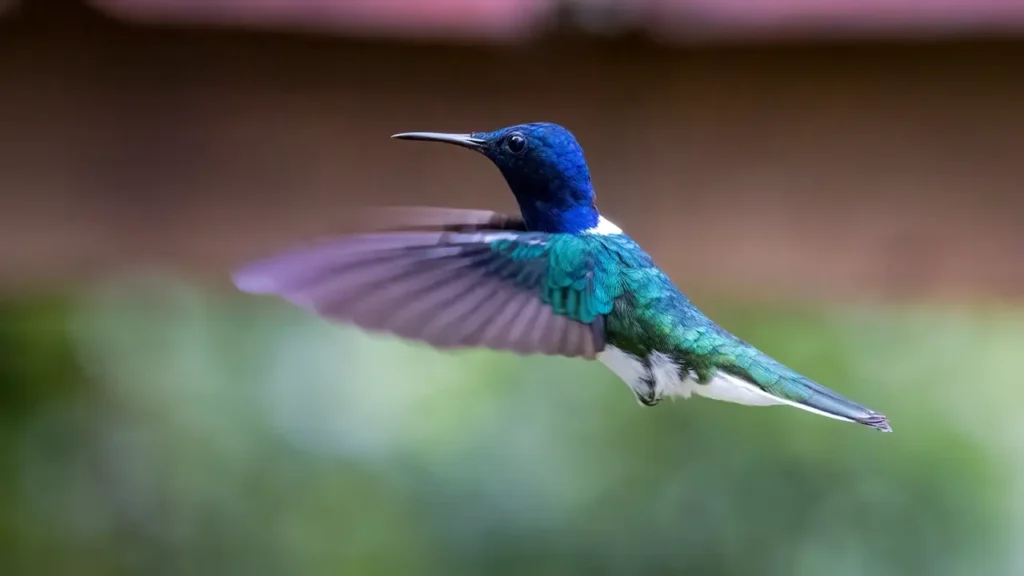
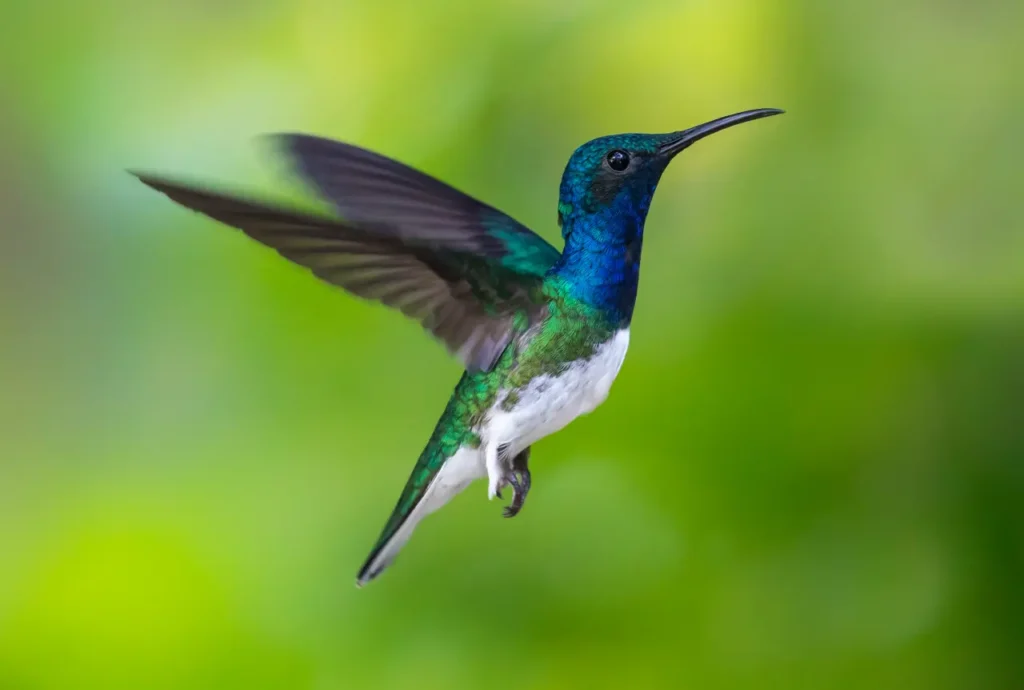
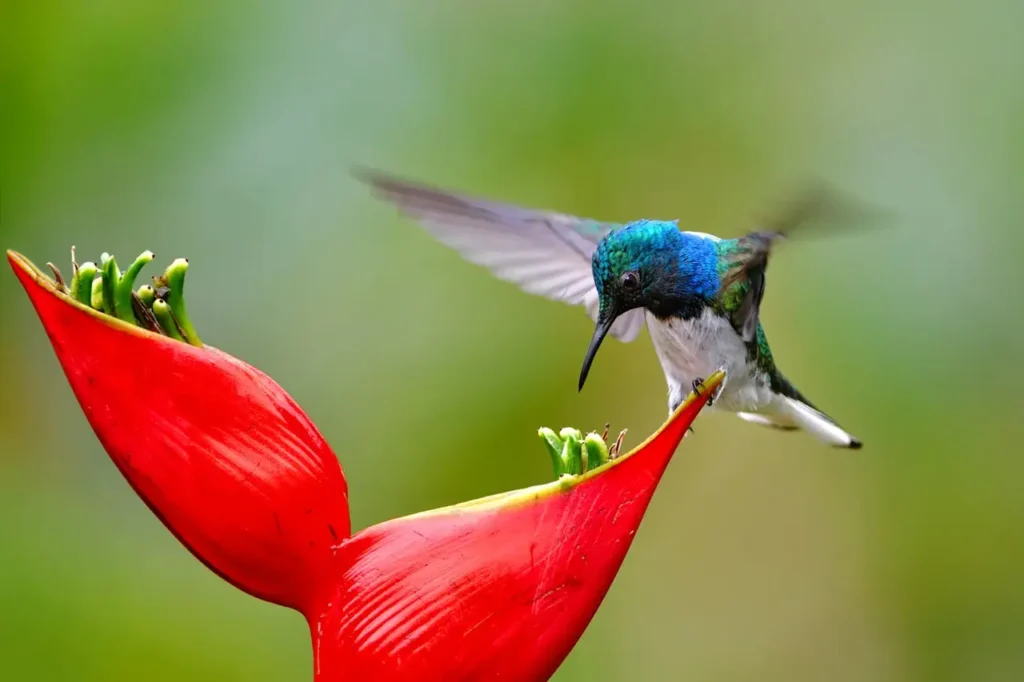
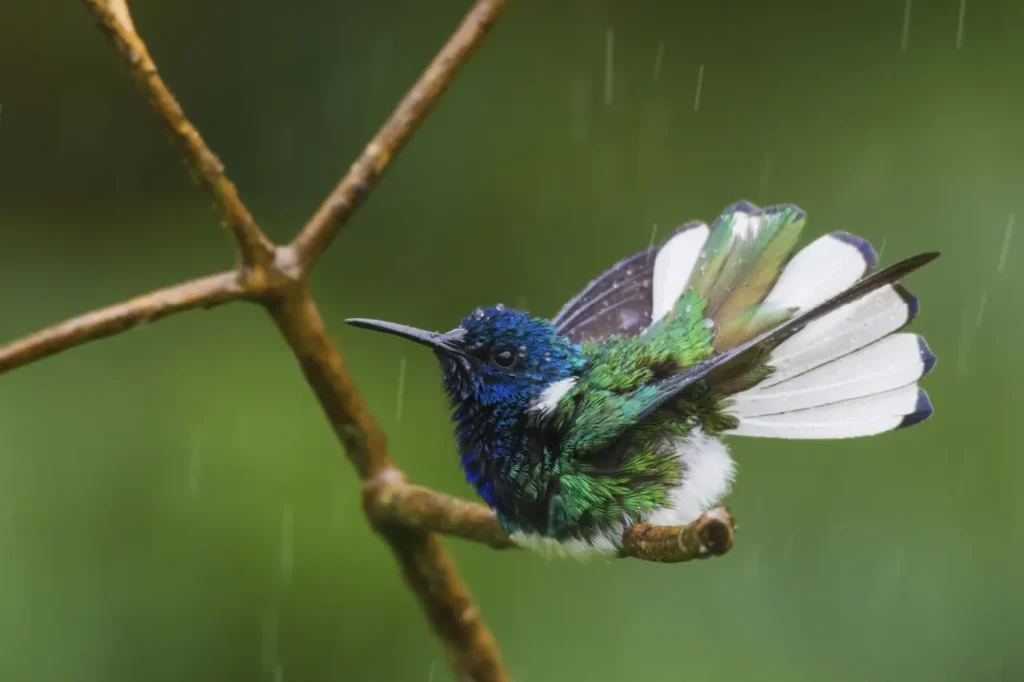
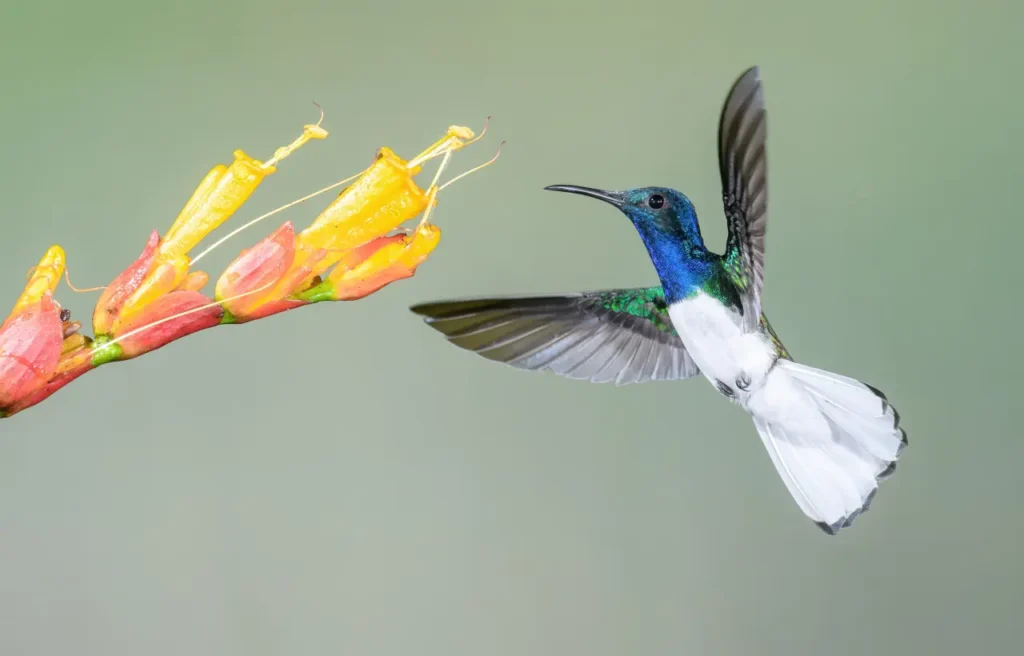
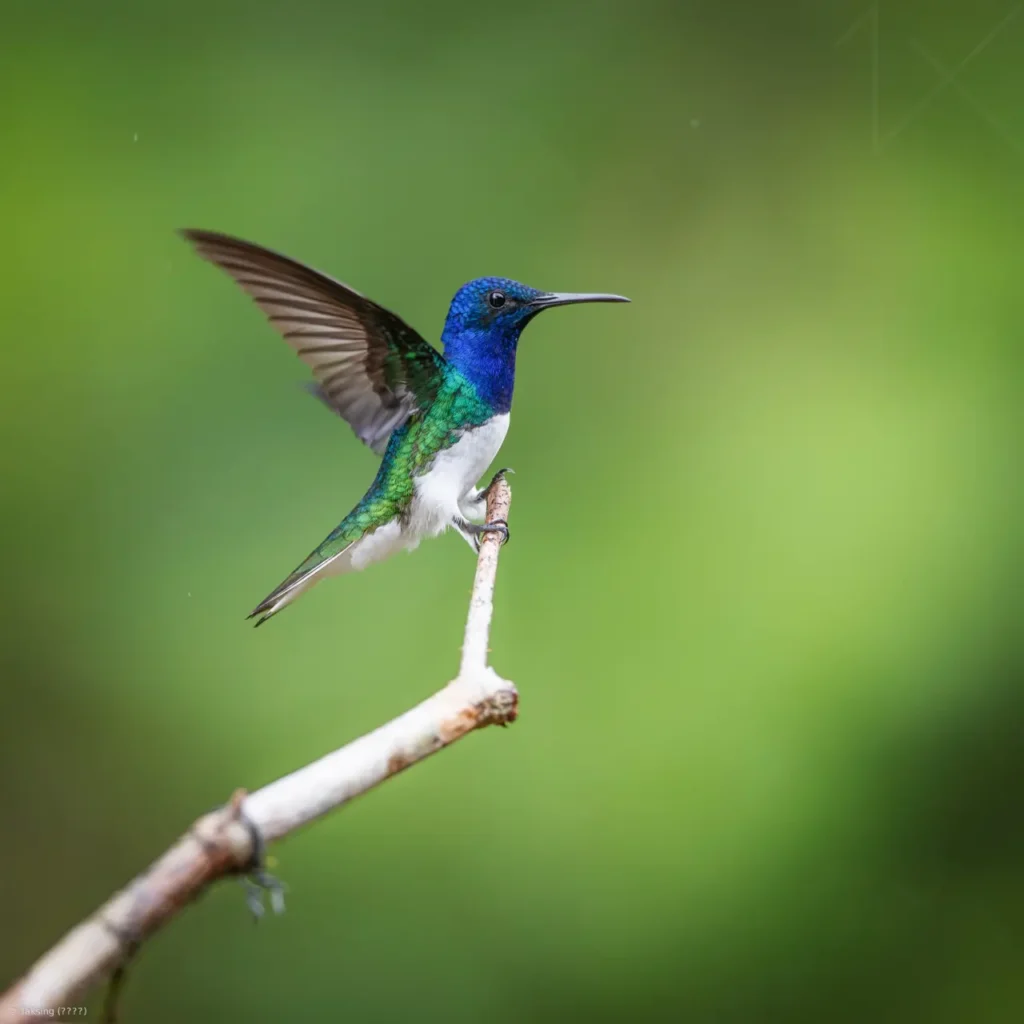
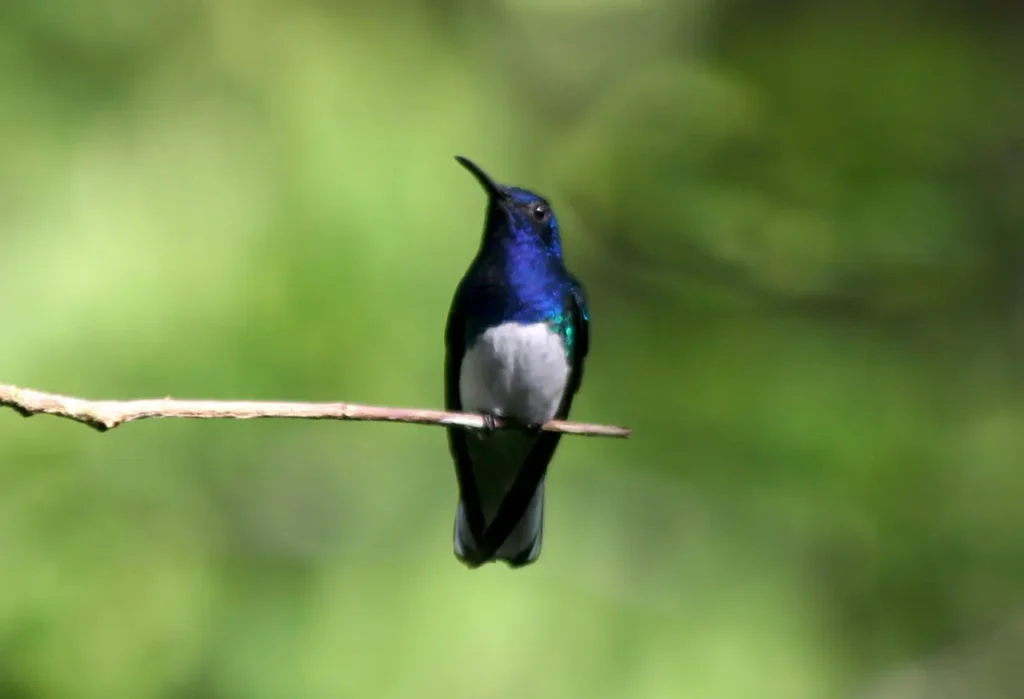
Appearance and Characteristics
The White-necked Jacobin is a medium-sized hummingbird that showcases a unique blend of colors and features. Its name is derived from the striking white collar that encircles its neck, creating a stunning contrast against its iridescent dark green plumage. When caught in the right light, this plumage glimmers with shades of deep blue and violet.
One of the most remarkable aspects of the White-necked Jacobin is its long and forked tail, which enhances its agility and maneuverability during flight. This tail, combined with its rapid wing beats and hovering abilities, makes it a captivating aerial performer.
Habitat and Range
Native to the Neotropical regions of Central and South America, the White-necked Jacobin inhabits a range of ecosystems, from tropical rainforests to montane cloud forests. It is often found in lush, flowering habitats where nectar is abundant. These hummingbirds are known to frequent gardens, forest edges, and areas with a profusion of blooming flowers.
Behaviors and Feeding Habits
The White-necked Jacobin is renowned for its acrobatic flight maneuvers and hovering capabilities. Its ability to hover in front of flowers while feeding on nectar with its specialized tongue is a mesmerizing sight to behold. This behavior not only showcases its adaptability but also highlights its importance as a pollinator of various flowering plants.
While nectar is its primary source of nutrition, the White-necked Jacobin also supplements its diet with insects and spiders. This dietary versatility adds to its ecological significance as a contributor to pollination and the control of insect populations.
Conservation and Cultural Significance
The White-necked Jacobin is not currently classified as a species of concern by conservation organizations. However, habitat loss, deforestation, and climate change remain potential threats to its populations. As a charismatic species that contributes to the beauty and diversity of Neotropical ecosystems, it plays a role in captivating the hearts of those who appreciate its presence.
The White-necked Jacobin, with its radiant plumage, aerial grace, and vital role as a pollinator, offers a window into the dazzling world of Neotropical avifauna. Its presence enriches the rainforests and gardens it inhabits, bringing an air of enchantment to the natural landscapes it calls home. By understanding and celebrating the beauty and significance of the White-necked Jacobin, we connect with the intricate web of life and the marvels of the avian realm that grace our planet.







